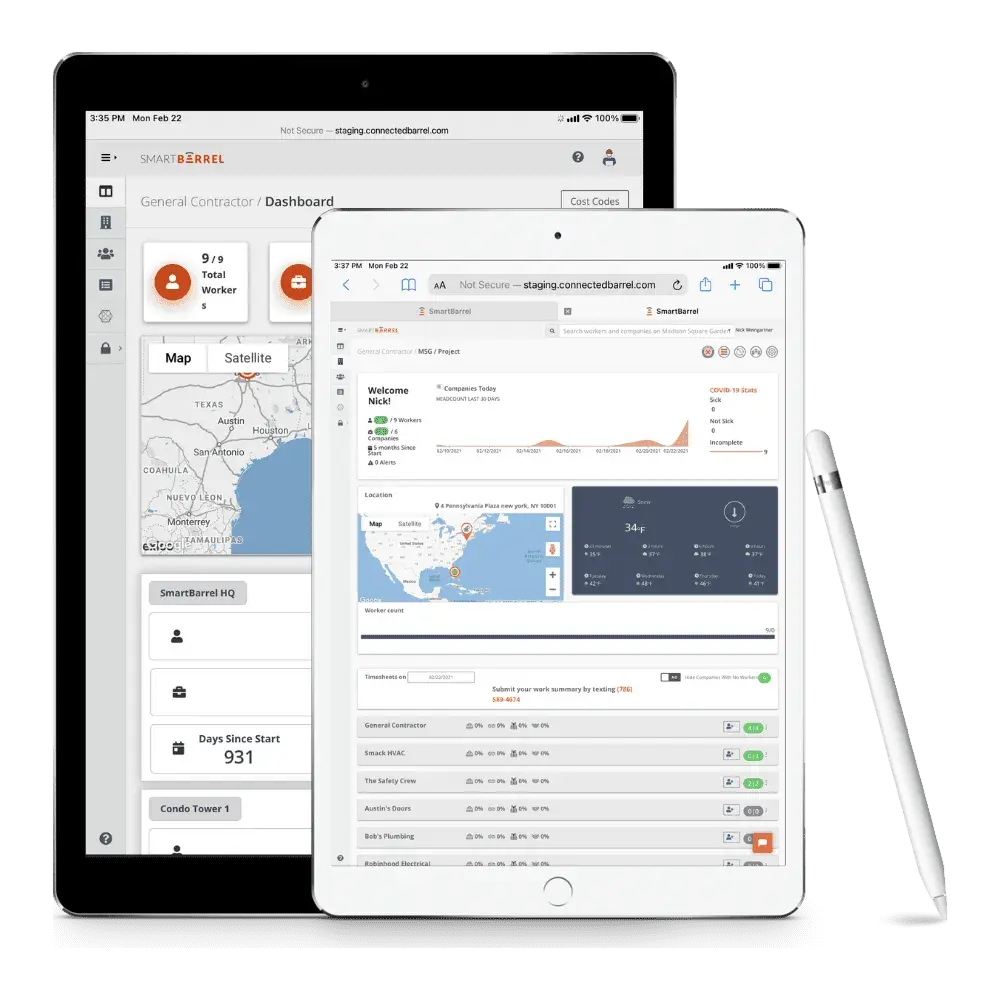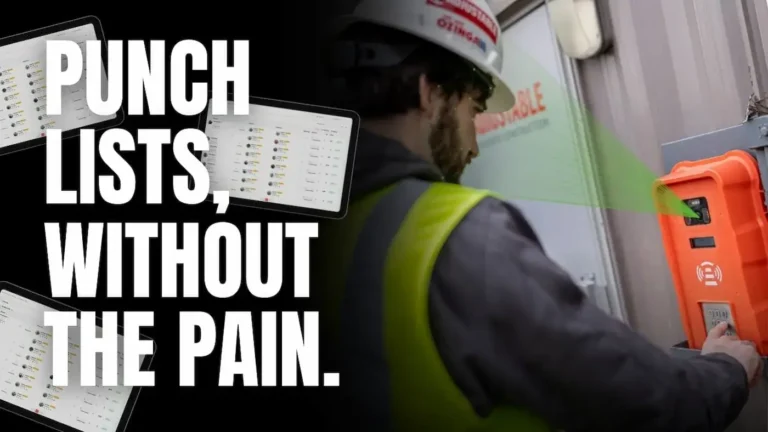You priced the job right, locked in the contract, and got to work—then found out the site conditions weren’t what you were told. Now, your lump sum bid is barely covering the expenses, and every hour on the site cuts into your profits. Or perhaps you selected a time and materials contract, but without precise tracking, labor hours started to quickly add up, and the next thing you know, the client is disputing invoices.
For contractors, project managers, and business owners, selecting the right contract can make the difference between a profitable project and financial loss. The choice between lump sum vs time and materials is a common issue in many construction projects. A wrong choice can lead to budget overruns, conflicts, and inefficiencies.
With fluctuating material costs, like a hike of 20% between January 2021 and January 2022, and labor shortages adding uncertainty, choosing the right contract type is essential to protect your finances. This guide will explain the key differences, benefits, and risks of both types of contracts. It will also provide you with practical tips on when to use lump sum vs T&M and how to track costs effectively in either model.
What is a Lump Sum Contract?
A lump sum contract, also known as a fixed price contract or stipulated sum contract, establishes a fixed price for the entire project based on detailed plans, labor, and specifications that are needed to complete the work. The contractor estimates all costs, including materials, labor costs, equipment, and overhead, before submitting the bid. If the actual costs come in lower than estimated, then the contractor keeps the difference. If costs go over, the contractor takes the hit. The project owner, however, pays the agreed price no matter what happens.
Despite the name, lump sum contracts don’t mean a one time payment. Most of these contracts are paid in installments, either at project milestones or on a set schedule. If the changes are needed, the owner must submit a change order, which the contractor must approve along with any price adjustments. This process makes lump sum contracts less flexible but ensures cost predictability for owners and a constant payment structure for contractors.
Lump sum and fixed-price contracts are two names for the same agreement structure. The real difference is between lump sum and other contract types, such as time and materials.
Key Features of Lump Sum Contracts
- Fixed Price: The total cost is established prior to work commencing, and it does not change unless changes are implemented through change orders
- Scope of Work (SOW): A comprehensive SOW lays out all the necessary deliverables and expectations upfront
- Risk Allocation: Contractors are responsible for cost overruns, but will be rewarded for costs being lower than estimated.
- Payment Terms: Payments are generally broken up and based on project milestones or completion phases.
What is a Time and Materials Contract?
A time and materials (T&M) contract sets the payment structure based on actual labor hours and materials used. Compared to lump sum agreements, T&M agreements do not use a fixed price. Instead, contractors charge for work as it happens. This makes it a popular option for projects that are not fully defined upfront.
Under a T&M contract, subcontractors are required to maintain specific records of time spent or materials that have been used. Construction records have a direct effect on billing and maintain transparency between project owners and contractors. Without strict tracking, costs can spiral resulting in invoice disputes.
Invoices in T&M contracts break down labor rates, markup, and material costs, so project owners can see how their money is spent. For accuracy and accountability, contractors must use a reliable system such as SmartBarrel to track labor hours and jobsite activity in real-time. Without accurate tracking, missing records and unchecked labor hours can lead to lost revenue and billing disputes.
For contractors, a time and materials contract relieves the pressure of providing an accurate estimate. Every construction project comes with unforeseen variables, risks, modifications, delays, and additional factors. Using a time and material contract, contractors lessen their own risk by having confidence that the project can remain profitable despite facing obstacles.
Key Features of T&M Contracts
- Transparency: Provides detailed invoices that show labor hours worked and materials used during the project.
- Flexibility: Expenses are allocated based on shifting project requirements.
- Not-to-Exceed Clause: Many T&M contracts have a financial cap to avoid excessive expenses.
- Labor Rates: Hourly or daily wages for workers are clearly specified in advance.
Lump Sum vs Time and Materials: Key Differences
When choosing between a lump sum vs time and materials contract, it’s important to understand the differences. Different contracts have their own features that cater to different project requirements, risk levels, and management processes. Here’s a simple comparison between Time and Materials vs. Lump Sum construction contracts:
Cost Structure
A lump sum contract has a fixed cost agreed upon before the project starts. A time and materials contract has a variable cost based on actual hours worked and materials used, plus markup for overhead and profit.
Scope Flexibility
The lump sum is best for projects with a clear scope and few expected changes. Time and materials are good for projects with unclear or changing project requirements. Changes can be made as the project moves on without the need to renegotiate the contract.
Risk Allocation
Under a lump sum contract, the contractor takes all the risk, including cost overruns or delays. This allows them to manage the resources efficiently, but can result in higher bids to cover potential risks. In terms of time and material contracts, the client and contractor share the risk.
Transparency
The big difference between lump sum vs time and materials contract is transparency. Lump sum has limited visibility into the breakdown of costs since the price is fixed upfront. Clients can’t get detailed invoices for labor hours and material costs. Time and materials have high transparency, clients get detailed invoices that show labor hours worked, materials used plus costs that occur throughout the project.
Administrative Effort
Lump sum agreements need less day-to-day management since all payments are tied to project milestones rather than ongoing tracking of time and materials. Time and materials contract needs careful tracking of time worked and materials that are used to ensure billing is accurate. This is a time-consuming process without good tracking tools.
Ideal Use Cases
Lump sum contracts are best for projects with clear goals, stable designs, and little chance of scope changes. Time and tracking contracts are most suitable for projects with uncertain needs or frequent changes, such as renovations or exploratory work, where flexibility is essential.
Pros and Cons of Lump Sum Contracts
Lump sum agreements come with advantages and drawbacks for both owners and contractors.
Pros:
For project owners, it is simpler for them to budget for a project with a fixed cost. This makes it easy to secure financing as well. Contractors can maximize their profit margins by carrying out projects effectively. Accounting procedures can be easier than for other forms of contracts.
- Lump sum contracts are simple and have a well-defined project scope and overall costs, making budgeting simpler for owners.
- Financing tends to be more available under these contracts since lenders are able to estimate overall costs more accurately. Owners also save a lower contingency percentage than with cost-plus contracts.
- Contractors with good management skills can have better profit margins, as they can finish jobs below budget through effective practices.
- Lump sum contracts require less paperwork and bookkeeping than other contracts and thus minimize overhead expenses and allow competitive bids.
Cons:
Lump sum contracts are easy to understand, but they come with certain risks for both project owners and contractors.
- Project owners should be aware that contractors can cut corners to stay within the set budget. Having a representative available on the jobsite guarantees quality work according to the original plan.
- Lump sum contracts create more change orders that add up to the costs. Owners must reserve additional funds for unanticipated changes.
- Good estimating is essential for contractors, especially with lump sum contracts. When estimates are not accurate, they can end up overspending and losing profits.
- It is essential to properly define the project scope. Change orders can be rejected by owners which can leave the contractors with unexpected costs.
Pros and Cons of Time and Materials Contracts
Time and material contracts offer flexibility but also carry potential downsides. To determine if this model suits your needs, consider your project scope, budget, and risk tolerance.
Pros:
Choose T&M contracts when you don’t know the exact project details, as this will allow you to make the changes as required.
- T&M contracts are suitable for projects with changing demands, such as renovations or urgent repairs. You can adjust without the need to change the whole agreement.
- Clients can easily monitor what they are paying for with a breakdown of labor and materials.
- Contractors get paid for the actual work that is completed, which lowers the risk of losing money from wrong estimates.
- You can start the work quickly, especially in urgent situations, without the need for a full budget upfront.
Cons:
T&M contracts require close tracking to remain within the budget limit.
- Since there is no established price, you will not be aware of the total costs until the end of the project. You need to utilize budget controls such as not-to-exceed clauses.
- Contractors should monitor hours worked and materials consumed closely. Clients should approve and review costs on a regular basis.
- Clients may complain about the effectiveness of work or material prices, which can then result in disputes. Proper documentation and transparency can mitigate these problems.

How to Choose Between Lump Sum and Time and Materials?
Choosing between lump sum vs time and materials contracts depends on the specific requirements and characteristics of your project.
If the work scope is well defined and not likely to be altered, then a lump sum contract would be your best choice. This type of contract gives cost certainty, which enables clients to accurately budget and contractors to concentrate on successful delivery. However, it requires careful estimating and comprehensive documentation initially to prevent any future disputes. Contractors need to be willing to take on risks like unforeseen costs or delays.
Alternatively, T&M contracts are ideal for projects with variable or changing scopes. These contracts offer flexibility since clients pay for real labor hours worked and materials consumed. They are particularly ideal for renovations or exploratory work where changes are required frequently. Though this openness benefits both parties, the variable cost nature can complicate budgeting. Customers have to keep expenses in check, and the contractors require robust tracking software that will monitor the time and materials spent so that accurate billing can be done.
Before choosing between T&M vs lump sum contracts, you have to know several factors which include, the clarity of the project scope, how much risk you are comfortable with, and your capacity for managing the contract.
Role of Time Tracking in Both Contract Types
Tracking time is essential for both lump sum and time and materials contracts. It ensures that projects stay on track, are done efficiently, and the costs are managed properly.
Under lump sum contracts, the contractors need to monitor labor hours to meet the project deadlines without going over the budget. Since the cost is fixed, they must manage their resources carefully without spending more than they have planned initially. Good tracking helps contractors provide more accurate bids for future projects by using real data from past work.
In T&M contracts, time tracking is even more crucial because clients pay only for the actual hours worked and materials used. Keeping detailed records helps to prevent disputes over billing and shows how resources are being used. Without proper tracking, contractors could lose money from unrecorded hours or inefficiencies. Time tracking also helps to spot problems like scope creep, which allows contractors to fix problems before they get worse.

SmartBarrel’s biometric time tracking system makes this process easier for both types of contracts. For lump sum contractors, SmartBarrel ensures that workers clock in properly, which reduces payroll mistakes and helps to control labor costs. For T&M contracts, SmartBarrel provides real-time labor tracking and instant approvals, ensuring accurate records of every hour worked. Features like geo-fencing confirm that workers are at jobsites, while the automated timesheets make the payroll process much smoother.
Contractors can use SmartBarrel’s technology to track labor costs and project progress easily, whether they work on a fixed-price or flexible contract. This accuracy reduces paperwork which helps to maintain profits and builds trust between contractors and clients.
Final Thoughts
Tracking time is non-negotiable for both contractors and project managers, whether you are working under a lump sum or time and materials contract. With a lump sum, accurate tracking makes sure you stay on top of deadlines and prevents cost overruns. For time and materials contracts, it is even more crucial. Without precise tracking, you will have the risk of losing revenue and facing billing disputes that could jeopardize client relationships.
SmartBarrel delivers accurate labor tracking with real-time insights, biometric verification, and automated timesheets—reducing disputes, preventing time theft, and improving oversight on T&M projects.
If you are serious about controlling costs and managing your project efficiently, now is the time to take action. Don’t wait and upgrade your tracking system with SmartBarrel today.
Take control of your projects. Track every hour and dollar with confidence—start your SmartBarrel demo today.




